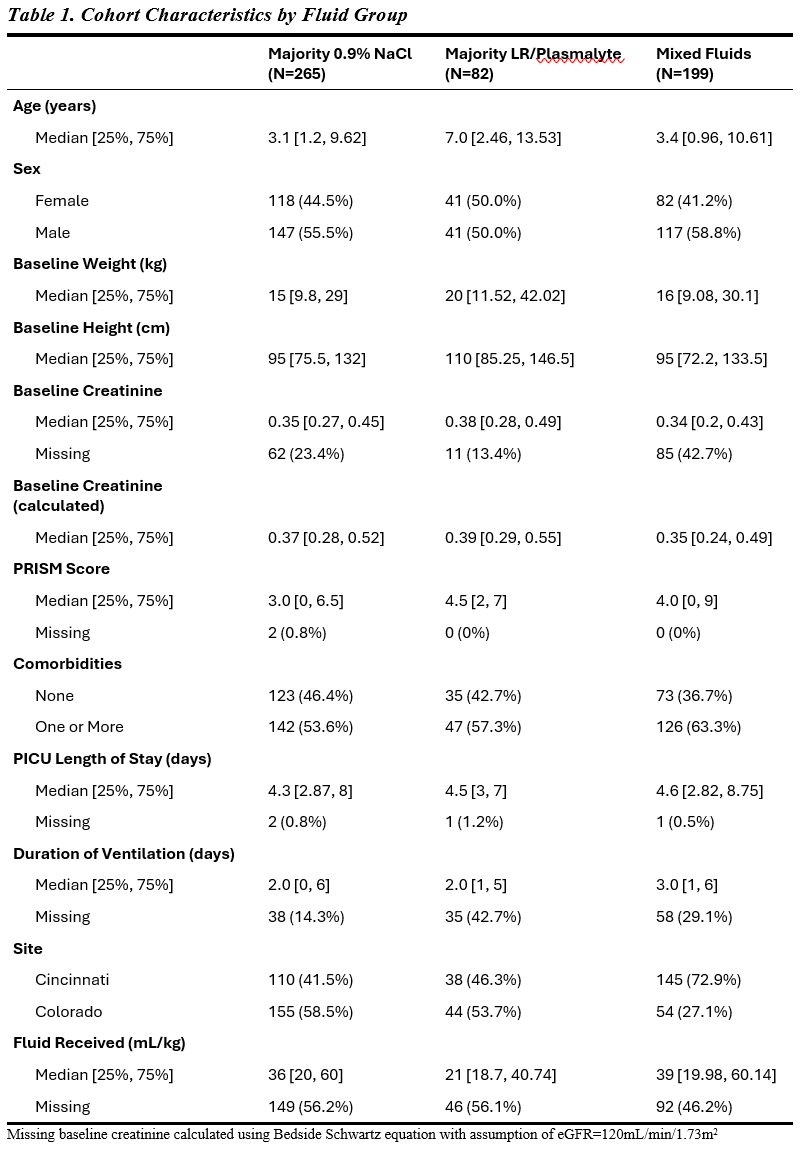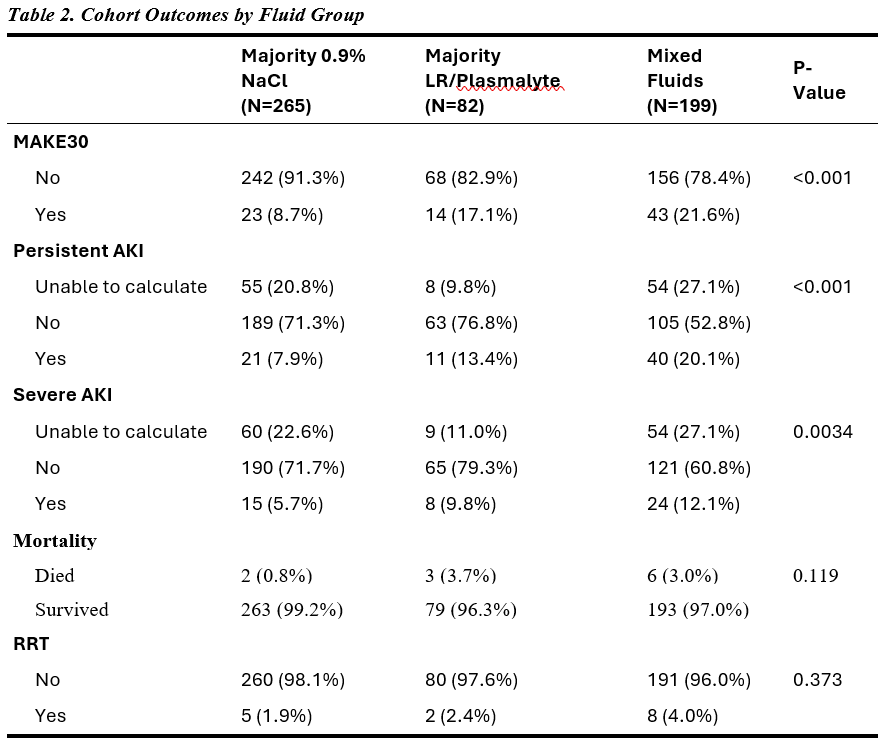Critical Care 4
Session: Critical Care 4
497 - Association of Intravenous Fluid Administration and Acute Kidney Injury in PICU Patients
Monday, April 28, 2025
7:00am - 9:15am HST
Publication Number: 497.3669
Austin McCuistion, Children's Hospital Colorado, Denver, CO, United States; Courtney Giannini, Children's Hospital Colorado, Aurora, CO, United States; John Brinton, University of Colorado School of Medicine, Aurora, CO, United States; Weiwen V. Shih, University of Colorado School of Medicine, Aurora, CO, United States; Erin K. Stenson, University of Colorado School of Medicine, Aurora, CO, United States

Austin McCuistion, MD (he/him/his)
Pediatric Nephrology Fellow
Children's Hospital Colorado
Denver, Colorado, United States
Presenting Author(s)
Background: Critically ill children are frequently affected by acute kidney injury (AKI), often thought to be secondary to underlying illness which led to the intensive care unit (PICU) admission. However, there is emerging evidence suggesting hyperchloremia may be associated with development of AKI. Critically ill children frequently receive intravenous fluids (IVF) and there is increasing concern that IVF choice may contribute to iatrogenic hyperchloremia, and subsequent development of AKI.
Objective: The objective of this study is to determine if patients admitted to the PICU are more likely to have severe AKI if they receive majority 0.9% NaCl fluids as compared to receiving majority balanced crystalloid.
Design/Methods: This was a prospective, observational cohort study approved by the institutional review boards at both institutions with a waiver of informed consent. Data was collected from the electronic medical record for patients admitted to two large quaternary ICUs during the study period. Inclusion criteria included receipt of at least one fluid bolus, ICU length of stay greater than 48 hours, and at least two measurements of renal function. Exclusion criteria included diagnosis of chronic kidney disease, use of hypertonic saline, or transfer from outside facility. Participants were categorized into the following three groups based on fluids received: >75% of fluids from 0.9%NaCl, >75% of fluids from LR, and a mixed fluid group. The primary outcome was MAKE30 (all cause 30-day mortality, renal replacement therapy (RRT), or persistent kidney dysfunction). Differences were assessed between the groups in the primary outcome and other intermediate measures using logistic regression including age, sex, PRISM (Pediatric Risk of Mortality) Score, and site as covariates.
Results: Participants in the mixed fluid group were younger with worse illness severity scores than other fluid groups. Those who received mixed fluid were more likely to have MAKE30. They were also more likely to have persistent or severe AKI. A difference was not detected for mortality or need for RRT.
Conclusion(s): This study suggests that mixed fluid type is associated with AKI. This finding may be attributable to residual confounding by indication for IVFs, if more severe illness made participants both more likely to receive mixed fluids and have severe AKI. We did attempt to overcome this limitation by controlling for illness severity in our logistic regression. Further investigation into the association between hyperchloremia and acute kidney injury should be pursued.
Table 1. Cohort Characteristics by Fluid Group

Table 2. Cohort Outcomes by Fluid Group

Table 3. Association Between Fluid Type and MAKE30 Compared to NS
 Logistic regression comparing MAKE30 between LR and Mixed fluid with NS group after controlling for age, sex, site, and PRISM score.
Logistic regression comparing MAKE30 between LR and Mixed fluid with NS group after controlling for age, sex, site, and PRISM score.
